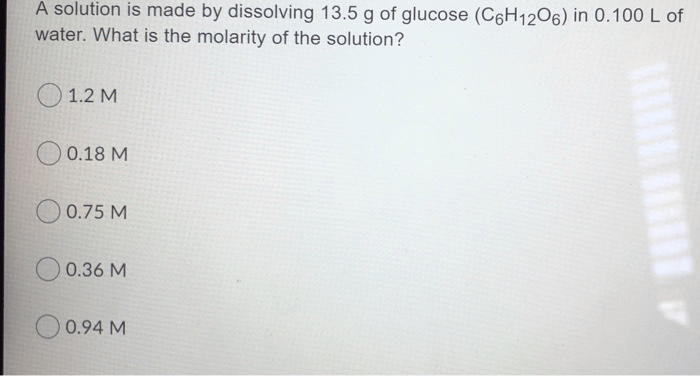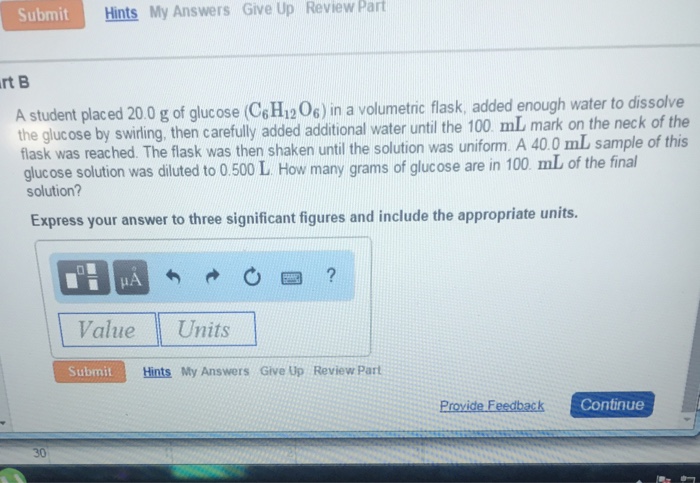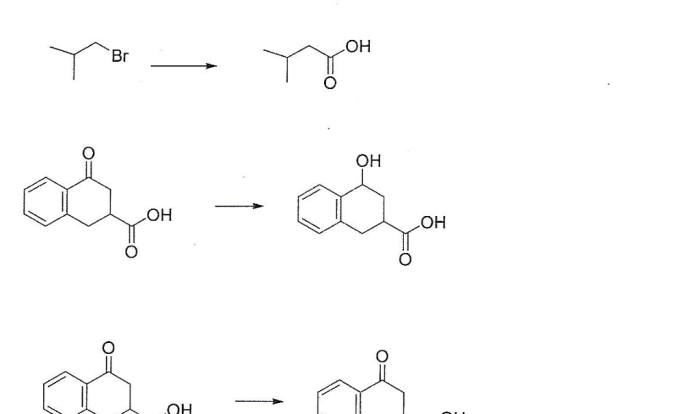A solution is prepared using 0.125 g of glucose – In the realm of chemistry, the preparation of solutions is a fundamental technique employed for a myriad of applications. One such solution is prepared using 0.125 g of glucose, a simple sugar with a pivotal role in biological systems. This comprehensive guide delves into the intricacies of glucose solution preparation, exploring its significance and diverse applications.
Glucose, a monosaccharide, is a vital source of energy for living organisms. Its chemical structure and properties render it soluble in water, making it an ideal candidate for solution preparation. The concentration of a solution, expressed in terms of molarity, is a crucial factor that influences its suitability for various applications.
Background on Glucose

Glucose is a monosaccharide, a simple sugar, with the molecular formula C6H12O6. It is a white, crystalline solid that is soluble in water. Glucose is the primary source of energy for most living organisms and is essential for cellular respiration.
It is also a precursor for the synthesis of other carbohydrates, such as starch and cellulose.
Glucose is found in many foods, including fruits, vegetables, and grains. It is also produced by the body during the breakdown of carbohydrates.
Solution Preparation: A Solution Is Prepared Using 0.125 G Of Glucose

Molarity is a measure of the concentration of a solution. It is defined as the number of moles of solute per liter of solution. The molarity of a solution can be calculated using the following formula:
M = n/V
where:
- M is the molarity of the solution (mol/L)
- n is the number of moles of solute (mol)
- V is the volume of the solution (L)
To prepare a 0.125 g glucose solution, we need to first calculate the number of moles of glucose present. The molar mass of glucose is 180.153 g/mol, so the number of moles of glucose present is:
n = 0.125 g / 180.153 g/mol = 0.000694 mol
We then need to calculate the volume of water required for the solution. We want to prepare a 0.125 M solution, so the volume of water required is:
V = n/M = 0.000694 mol / 0.125 M = 0.00555 L = 5.55 mL
To prepare the solution, we would dissolve 0.125 g of glucose in 5.55 mL of water.
Solution Concentration

The molarity of the prepared glucose solution is 0.125 M. This means that there are 0.125 moles of glucose per liter of solution.
The concentration of a solution can be affected by a number of factors, including temperature, pressure, and the presence of other solutes.
Solution Applications
Glucose solutions are used in a variety of applications, including:
- Medicine:Glucose solutions are used to treat hypoglycemia, a condition in which the blood sugar level is too low. They are also used to provide nutrition to patients who are unable to eat or drink.
- Food industry:Glucose solutions are used as a sweetener in foods and beverages. They are also used to make candy and other confectionery products.
- Agriculture:Glucose solutions are used to feed plants. They can be applied to the soil or sprayed on the leaves.
The concentration of the glucose solution used for a particular application will depend on the specific requirements of that application.
Questions Often Asked
What is the purpose of preparing a 0.125 g glucose solution?
Glucose solutions are used in various applications, including research, medicine, and industry, where precise concentrations are required for specific purposes.
How does the concentration of a glucose solution affect its applications?
The concentration of a glucose solution influences its suitability for different applications. For instance, a higher concentration may be required for certain chemical reactions, while a lower concentration may be appropriate for biological studies.

